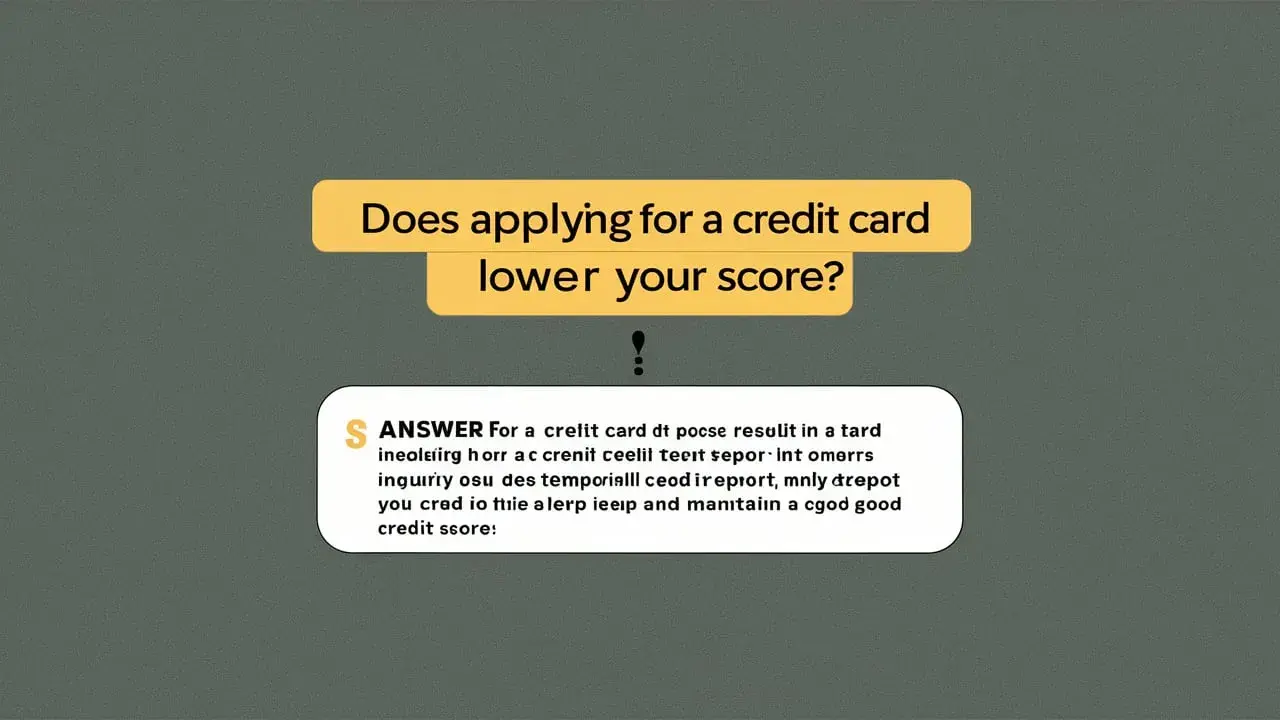-
Posted on: 21 Dec 2022

-
Navigating the festive season financially can be a joyous experience with the right credit card strategies. This guide offers essential credit card tips to help you prepare for the Christmas holiday, ensuring you can enjoy the celebrations without the burden of post-holiday debt. Learn how to maximize rewards, avoid interest, and budget effectively.
Understanding Your Credit Cards: The Foundation of Holiday Spending
As the most wonderful time of the year approaches, the allure of festive shopping can quickly turn into a financial challenge if not managed wisely. Credit cards, while offering convenience and potential rewards, can become a source of stress if their terms and conditions are not fully understood. Before you even think about browsing for gifts or planning festive meals, taking a deep dive into your existing credit card portfolio is paramount. This foundational step ensures you are leveraging your plastic responsibly and effectively, setting the stage for a financially sound holiday season.
Know Your Credit Limit and Available Credit
Your credit limit is the maximum amount you can borrow on a credit card. It's crucial to know this figure for each of your cards. Exceeding your limit can result in hefty fees and negatively impact your credit score. More importantly, understanding your available credit – your limit minus your current balance – helps you gauge how much you can safely spend. For instance, if a card has a $5,000 limit and you currently owe $2,000, your available credit is $3,000. This figure should be a key component of your holiday spending plan.
Interest Rates (APRs): The Silent Killer of Holiday Cheer
Perhaps the most critical aspect of any credit card is its Annual Percentage Rate (APR). This is the interest you'll pay on any balance you carry over from month to month. For holiday spending, understanding your purchase APR is vital. Many cards offer introductory 0% APR periods, which can be incredibly beneficial if you plan to make larger purchases and pay them off before the promotional period ends. However, once that period is over, standard APRs can be quite high. As of 2025, average credit card APRs hover around 20-24%, but can be much higher for those with lower credit scores. Always know your card's APR and aim to pay off your holiday balance in full to avoid accumulating costly interest charges. A balance of $1,000 at a 22% APR could cost you over $200 in interest in a year if only minimum payments are made.
Fees: Hidden Costs to Watch For
Credit cards can come with various fees that can add up quickly. Common fees include annual fees, late payment fees, over-limit fees, balance transfer fees, and foreign transaction fees. While annual fees are often associated with premium rewards cards, other fees can be triggered by simple mistakes. A late payment fee can range from $30 to $41 for a first offense, and significantly higher for subsequent offenses. For holiday spending, be particularly mindful of late payment fees. If you anticipate a busy period, set up automatic payments or reminders to ensure you don't miss a due date. Foreign transaction fees, typically 1-3%, are relevant if you plan to shop online from international retailers or travel abroad during the holidays.
Rewards Programs: Points, Miles, and Cashback
This is where credit cards can truly enhance your holiday experience. Most cards offer rewards in the form of points, miles, or cashback. Understanding how your specific card's rewards program works is key to maximizing your benefits. Some cards offer bonus categories that rotate quarterly, or specific categories that always earn higher rewards (e.g., 3% on dining, 2% on gas). For holiday shopping, identify cards that offer elevated rewards on categories where you'll be spending the most, such as general merchandise, department stores, or online retailers. For example, a card offering 5% cashback on online purchases could save you significant money on gifts bought through e-commerce platforms.
- Points: Often redeemable for travel, gift cards, or statement credits.
- Miles: Primarily used for flights and hotel stays, though some can be redeemed for cash.
- Cashback: A direct percentage of your spending returned to you, either as a statement credit or direct deposit.
Consider which type of reward best suits your holiday needs. If you're planning a post-holiday trip, miles might be more valuable. If you're looking to offset some of your holiday expenses, cashback is a straightforward benefit. Always check the redemption value and any minimum redemption thresholds.
Credit Utilization Ratio: Maintaining a Healthy Score
Your credit utilization ratio (CUR) is the amount of credit you're using compared to your total available credit. Experts recommend keeping this ratio below 30%, and ideally below 10%, to maintain a good credit score. High utilization can signal to lenders that you are over-reliant on credit. During the holidays, spending can increase dramatically, potentially pushing your CUR higher. If you know you'll be making significant purchases, consider these strategies:
- Pay down balances before the statement closing date: This ensures a lower balance is reported to credit bureaus.
- Request a credit limit increase: If you have a good payment history, a higher limit can improve your CUR without increasing spending.
- Use multiple credit cards strategically: Distribute your spending across different cards to avoid maxing out any single card.
A healthy CUR is not just for good credit scores; it also provides you with more breathing room for unexpected expenses, which can sometimes arise during the busy holiday season.
Planning Your Holiday Budget: The Smart Approach
The magic of Christmas often comes with a price tag. Without a clear budget, it's easy for holiday spending to spiral out of control, leading to post-holiday financial regret. A well-defined budget acts as your financial roadmap, guiding your spending decisions and ensuring you can enjoy the festivities without compromising your long-term financial health. This section will guide you through creating a realistic and effective holiday budget, integrating credit card usage strategically.
Estimate Your Total Holiday Expenses
The first step is to sit down and list out every potential expense associated with the holiday season. Be thorough. Think beyond just gifts.
- Gifts: For family, friends, colleagues, teachers, etc.
- Decorations: New lights, ornaments, tree, wreaths, etc.
- Food and Drink: Groceries for parties, special meals, treats, alcohol.
- Travel: Gas, flights, accommodation if visiting family.
- Entertainment: Holiday parties, concerts, movies, ice skating.
- Clothing: New outfits for parties or events.
- Charitable Donations: Giving back during the season.
- Shipping Costs: For gifts sent to distant loved ones.
- Postage: For holiday cards.
- Miscellaneous: Unexpected expenses that always seem to pop up.
Once you have your list, assign an estimated cost to each item. Be realistic. If you're unsure, look back at last year's spending for a reference point. In 2024, the average American spent approximately $1,000 on holiday-related purchases, with a significant portion allocated to gifts. For 2025, with inflation and economic shifts, this figure might see a slight increase or stabilization, making a budget even more critical.
Set a Realistic Spending Limit
Based on your estimated expenses and your overall financial situation, set a firm total spending limit for the holiday season. This limit should be an amount you are comfortable spending and can realistically afford, whether from savings or anticipated income. Avoid the temptation to overextend yourself. It's better to scale back on some areas than to incur debt you'll struggle to repay. For example, if your income allows for $1,500 in holiday spending, stick to that number, even if your initial estimates total $1,800. You'll need to find ways to trim $300 from your planned expenses.
Allocate Funds to Specific Categories
Once you have your total limit, break it down into specific categories based on your initial expense estimates. This granular approach helps you track spending more effectively. For instance:
- Gifts: $600
- Food: $300
- Decorations: $100
- Travel: $200
- Entertainment: $150
- Miscellaneous: $150
This allocation provides clear targets for each area. If you find yourself overspending in one category, you'll know where you need to cut back to stay within your overall limit.
Decide How Credit Cards Fit into Your Budget
Now, integrate your credit cards into this budget. The golden rule for holiday spending with credit cards is to treat them as a debit card or cash. This means only spending what you have budgeted for and can afford to pay off immediately or within the month.
- For planned purchases: If your budget allows for a specific gift purchase, and you have sufficient available credit and a plan to pay it off, use your credit card.
- For rewards: If a particular card offers excellent rewards on the type of purchase you're making (e.g., travel points for holiday flights), use that card, provided it aligns with your budget and repayment plan.
- Avoid impulse buys: A credit card can make impulse purchases easier. Stick to your budget and only buy what's on your list.
Consider using a specific credit card solely for holiday expenses to make tracking easier. As of 2025, many consumers find it helpful to use a card with a 0% introductory APR if they anticipate needing a short grace period, but this must be coupled with a strict repayment schedule.
Track Your Spending Religiously
A budget is only effective if you track your spending against it. This is where your credit card statements and budgeting apps become invaluable.
- Regularly review statements: Check your credit card statements at least weekly.
- Use budgeting apps: Many apps link to your bank and credit card accounts to automatically categorize spending and show you how much you have left in each budget category.
- Keep receipts: For cash purchases or if you prefer manual tracking.
If you're using a credit card for holiday purchases, ensure you're monitoring your balance closely. For example, if your 'Gifts' budget is $600 and you've spent $550 on a rewards card, you know you have $50 left for gifts. This prevents accidental overspending.
Build in a Contingency Fund
Even with the best planning, unexpected expenses can arise. It's wise to allocate a small portion of your budget – perhaps 5-10% – as a contingency fund. This buffer can cover unforeseen costs without derailing your entire budget or forcing you to rely on credit for emergencies. For a $1,500 holiday budget, a $75-$150 contingency fund can be invaluable.
Maximizing Rewards and Cashback for Christmas
The holiday season is often the peak spending period for many households. This makes it the perfect opportunity to leverage credit card rewards programs to your advantage. By strategically choosing which cards to use for which purchases, you can earn valuable points, miles, or cashback that can effectively reduce the overall cost of your holiday celebrations or provide benefits for the year ahead. This section delves into actionable strategies for maximizing your rewards during this festive spending spree.
Identify Your Highest Spending Categories
The first step to maximizing rewards is understanding where your holiday spending will be concentrated. Common high-spending areas during Christmas include:
- Online Retailers: For gifts ordered through websites like Amazon, Target, Walmart, etc.
- Department Stores: For clothing, electronics, and general merchandise.
- Groceries: For festive meals and entertaining.
- Travel: For flights, hotels, and gas if visiting family.
- Dining: For holiday parties and eating out.
As of 2025, online shopping continues to be a dominant force in holiday retail. Many credit cards offer bonus rewards for online purchases or for specific retailers.
Leverage Category Bonuses and Rotating Categories
Many credit cards offer higher reward rates on specific spending categories.
- Evergreen Bonuses: Some cards consistently offer 3-5% cashback or 2-3x points on categories like groceries, gas, or dining. Use these cards for your regular holiday shopping in these areas.
- Rotating Categories: Other cards, like the Discover it Cash Back or Chase Freedom Flex, offer 5% cashback on specific categories that change each quarter. For Q4 (October-December), these categories often include popular holiday shopping destinations like Amazon, Walmart, or department stores. Make sure to activate these offers at the beginning of the quarter to earn the bonus rewards.
For example, if your card offers 5% cashback on Amazon purchases in Q4, and you plan to spend $500 on Amazon gifts, you'll earn $25 in cashback. This might seem small, but it adds up across multiple purchases and categories.
Utilize Co-Branded Retailer Cards Strategically
If you're a frequent shopper at a particular retailer (e.g., a large department store chain, an electronics store, or a travel portal), their co-branded credit card might offer significant benefits. These cards often provide:
- Higher rewards rates: For purchases made directly with the retailer.
- Exclusive discounts and promotions: Special offers only for cardholders.
- Free shipping or extended return periods: Added convenience for online shoppers.
However, be cautious. The rewards are typically most valuable when redeemed within that retailer's ecosystem. Ensure the card's APR and fees are reasonable if you anticipate carrying a balance, which is not recommended for holiday spending.
Consider Welcome Bonuses and Sign-Up Offers
If you're considering applying for a new credit card before the holiday season, look for cards with attractive welcome bonuses. Many cards offer substantial bonus rewards (e.g., $200-$500 cashback or tens of thousands of points/miles) after meeting a minimum spending requirement within the first few months of opening the account. For example, a card offering $300 cashback after spending $1,000 in the first three months could effectively give you a 30% return on that initial spending.
Important Note: Only apply for new cards if you can meet the spending requirement organically through your planned holiday purchases without overspending. Applying for too many cards in a short period can negatively impact your credit score.
Optimize Travel Rewards for Holiday Trips
If your holiday plans involve travel, travel rewards credit cards can be incredibly beneficial.
- Airline Co-branded Cards: Offer miles specific to an airline, often with perks like free checked bags or priority boarding.
- Hotel Co-branded Cards: Provide points for stays at a specific hotel chain and often include elite status benefits.
- General Travel Cards: Offer flexible points that can be redeemed across various airlines, hotels, or through a travel portal. These often provide the best value for maximizing rewards.
For instance, if you need to book flights that cost $800, using a travel card that earns 2 miles per dollar spent would give you 1,600 miles. If those miles can be redeemed for a value of 1.5 cents per mile, that's equivalent to $24 in value, effectively reducing your flight cost. As of 2025, the value of travel points can fluctuate, so understanding redemption rates is key.
Redeem Rewards Wisely
Accumulating rewards is only half the battle; redeeming them effectively is crucial.
- Cashback: Often the most straightforward. Can be redeemed as a statement credit to offset holiday expenses or as a direct deposit.
- Travel Redemptions: Can offer the highest value per point, especially when booking flights or premium hotel rooms. Look for transfer partners that offer good redemption rates.
- Gift Cards: Sometimes offered at a slight discount or a fixed rate. Compare this to other redemption options.
Before the holidays, assess your reward balances. Do you have enough points for a desired redemption? Could you use a small amount of cashback to offset a specific holiday cost? For example, if you have $50 in accumulated cashback, consider applying it to your grocery bill for holiday feasts.
Track and Organize Your Rewards
With multiple cards, it's easy to lose track of rewards. Use a spreadsheet or a rewards tracking app to monitor your points, miles, and cashback balances, as well as their expiration dates and redemption options. This ensures you don't miss out on valuable rewards due to oversight.
Avoiding Holiday Debt Traps: Essential Safeguards
The festive season, while joyful, can also be a period where many individuals fall into the trap of accumulating high-interest credit card debt. The pressure to buy gifts, host parties, and travel can lead to impulsive spending that outstrips immediate financial capacity. Fortunately, with proactive strategies and mindful habits, you can navigate the holidays without succumbing to debt. This section outlines crucial safeguards to ensure your credit card usage remains responsible and your financial well-being is protected.
Treat Credit Cards Like a Debit Card
This is the most fundamental rule for avoiding holiday debt. Before making any purchase with a credit card, ask yourself: "Do I have the cash in my bank account right now to cover this?" If the answer is no, reconsider the purchase. By mentally treating your credit card as a direct link to your bank account, you impose the same spending limits you would with cash or a debit card. This simple shift in mindset can prevent overspending. For example, if you've budgeted $500 for gifts and have spent $450, you know you only have $50 left. Using a credit card for that last $50 ensures you don't dip into funds meant for other essential expenses.
Set Specific Spending Limits Per Person or Category
Beyond your overall holiday budget, setting individual spending limits for each gift recipient or specific expense category can be highly effective. For instance, you might decide to spend no more than $50 on any single gift for extended family or $100 on decorations. This prevents a few extravagant purchases from consuming your entire gift budget.
Example:
Recipient/Category Budgeted Amount Actual Spent Remaining Parents $150 $120 $30 Siblings $200 $200 $0 Friends $100 $75 $25 This granular tracking helps you stay accountable and make informed decisions about where to allocate remaining funds.
Avoid Impulse Purchases
The holiday season is rife with temptations – dazzling displays, limited-time offers, and the general feeling of indulgence. Impulse purchases are a major contributor to holiday debt. Before clicking "buy" or swiping your card, implement a 24-hour rule: wait a full day before making any non-essential purchase. Often, the urge will pass, and you'll realize you didn't truly need the item. If you're shopping online, remove items from your cart if you're struggling with temptation.
Beware of "Buy Now, Pay Later" (BNPL) Services
While BNPL services offer a way to split purchases into interest-free installments, they can also encourage overspending and lead to multiple payment obligations. If you use BNPL, ensure you can comfortably manage all payments. Treat them like any other credit obligation. As of 2025, the regulatory landscape for BNPL is evolving, but consumer responsibility remains key.
Leverage 0% Introductory APR Offers Wisely
A 0% introductory APR can be a powerful tool if used correctly. If you plan to make a significant purchase that you can pay off within the promotional period (typically 12-18 months), a 0% APR card can save you substantial interest. However, the danger lies in not paying off the balance before the regular APR kicks in.
- Set a clear repayment goal: Know exactly how much you need to pay each month to clear the balance before the intro period ends.
- Avoid further spending on the card: Once you've made your planned 0% APR purchase, consider putting the card away to avoid adding to the balance.
- Factor in fees: Some 0% APR offers come with balance transfer fees or other charges.
For example, if you buy a $1,000 television on a 0% APR card and plan to pay it off over 10 months, you'll need to pay $100 each month. Missing a payment could void the 0% APR offer.
Don't Use Credit Cards for Cash Advances
Cash advances – withdrawing cash using your credit card – are an extremely expensive way to borrow money. They typically come with high upfront fees (often 3-5% of the amount withdrawn) and a much higher APR than regular purchases, which starts accruing interest immediately with no grace period. Avoid cash advances at all costs, especially during the holidays.
Monitor Your Credit Card Statements Diligently
Regularly reviewing your credit card statements is crucial for identifying unauthorized charges, tracking your spending against your budget, and spotting any potential signs of fraud. If you notice any discrepancies, contact your credit card issuer immediately. For holiday spending, this vigilance helps ensure you're only paying for what you intended to buy.
Responsible Credit Card Usage During the Holidays
The festive period is a time for generosity and celebration, and credit cards can facilitate these aspects of the holidays. However, their convenience can also be a double-edged sword, potentially leading to financial strain if not managed with a strong sense of responsibility. This section provides practical guidance on how to use your credit cards responsibly throughout the Christmas season, ensuring you can enjoy the festivities without jeopardizing your financial future. By adhering to these principles, you can harness the benefits of credit cards while mitigating their risks.
Prioritize Paying Your Minimum Balance (and More!)
The most basic form of responsible credit card usage is always paying at least the minimum balance by the due date. However, during the holidays, aiming to pay more than the minimum is highly advisable, especially if you've made significant purchases. Paying only the minimum will extend the life of your debt and significantly increase the total interest paid. As of 2025, with average APRs remaining high, even small balances can grow substantially if only minimum payments are made. For example, a $500 balance at a 22% APR, with a minimum payment of 2% of the balance, would take years to pay off and cost hundreds in interest.
Set Up Automatic Payments
To avoid late fees and missed payments, which can damage your credit score and incur penalties, set up automatic payments for at least the minimum balance on all your credit cards. You can often customize this to pay the full statement balance if you are confident you can afford it each month. This is particularly helpful during the busy holiday season when schedules are hectic. Ensure you have sufficient funds in your linked bank account to cover the automatic payment to avoid overdraft fees.
Know When to Say "No" to Tempting Offers
Retailers often present tempting offers during the holidays, such as "buy now, pay later" schemes, extended payment plans, or instant credit card applications for discounts. While these can seem appealing, critically evaluate them against your budget and financial goals. If an offer encourages you to spend beyond your means or commit to payments you can't comfortably manage, it's best to decline. Remember, the true cost of a purchase includes any interest paid over time.
Use Credit Cards for Planned Purchases Only
The best way to use credit cards responsibly during the holidays is to limit their use to purchases you have already budgeted for and planned. Avoid using credit cards for impulse buys or to cover expenses that fall outside your holiday budget. Create a shopping list and stick to it. If you find yourself tempted by an unplanned item, refer back to your budget and individual spending limits.
Communicate with Your Credit Card Issuer if Facing Difficulties
If, despite your best efforts, you find yourself struggling to make payments due to unforeseen circumstances, don't hesitate to contact your credit card issuer. They may be able to offer hardship programs, payment plans, or temporary relief options. Proactive communication is always better than defaulting on payments, which can have severe long-term consequences for your creditworthiness.
Be Mindful of Credit Limits and Utilization
As mentioned earlier, maintaining a low credit utilization ratio (CUR) is crucial for your credit score. During the holidays, your spending can significantly increase your CUR. To mitigate this:
- Spread purchases across multiple cards: If you have several credit cards, distribute your spending to avoid maxing out any single card.
- Make interim payments: If you know you'll be making a large purchase, consider making a payment on that card before the statement closing date to reduce the reported balance.
- Request a credit limit increase: If you have a good credit history, a higher credit limit can improve your CUR without increasing your actual spending.
For instance, if you have two cards with $5,000 limits each, and you spend $2,000 on one card, your CUR is 20% ($2,000/$10,000 total available credit). If you spend $2,000 on one card with a $2,000 limit, your CUR on that card is 100%, which is detrimental.
Understand Your Cardholder Agreement
Take the time to re-read your credit cardholder agreement, especially if you haven't reviewed it in a while. Pay attention to details about fees, grace periods, interest calculations, and reward program terms. Knowing the specifics of your agreement empowers you to use the card more effectively and avoid unexpected charges.
Secure Your Credit Card Information
With increased online shopping and the use of digital wallets, safeguarding your credit card information is paramount. Use strong, unique passwords for online accounts, enable two-factor authentication whenever possible, and be wary of phishing attempts. Never share your credit card details via email or unsecured messaging platforms. For in-person transactions, ensure you are in a secure environment and that your card is not left unattended.
Post-Holiday Credit Card Management: Regaining Control
The festive lights may have dimmed, and the last of the holiday treats consumed, but the financial impact of the Christmas season can linger long after. If your credit card balances have grown during the holidays, it's essential to implement a post-holiday strategy to regain control of your finances. This involves assessing the damage, creating a repayment plan, and making adjustments to prevent future overspending. This section provides a roadmap for effectively managing your credit card debt after the holidays.
Assess Your Holiday Spending and Debt
The first step is to get a clear picture of your financial situation. Gather all your credit card statements from the holiday period and sum up the total amount spent and the resulting balances. Identify which cards have the highest balances and the highest APRs. This information is crucial for prioritizing your repayment efforts. For example, if you have $3,000 in holiday debt spread across two cards, one with a 24% APR and another with a 15% APR, you know the card with the higher APR should be your primary focus.
Create a Realistic Repayment Plan
Once you understand the extent of your debt, develop a concrete plan to pay it down. There are two popular debt repayment strategies:
- Debt Snowball Method: Focus on paying off your smallest balance first, regardless of the interest rate, while making minimum payments on all other debts. Once the smallest debt is paid off, roll that payment amount into the next smallest debt. This method provides psychological wins and motivation.
- Debt Avalanche Method: Focus on paying off the debt with the highest interest rate first, while making minimum payments on all other debts. Once the highest-interest debt is paid off, move to the debt with the next highest interest rate. This method saves you the most money on interest over time.
As of 2025, financial experts often recommend the debt avalanche method for its efficiency in minimizing interest costs, but the snowball method can be more motivating for some.
Consider Balance Transfers or Debt Consolidation
If you have multiple high-interest credit card debts, a balance transfer to a new card with a 0% introductory APR can be a strategic move. This allows you to pay down the principal without accumulating interest for a specified period.
- Look for 0% intro APR balance transfer offers: Many cards offer 12-18 months of 0% APR.
- Factor in balance transfer fees: These typically range from 3-5% of the transferred amount. Calculate if the savings outweigh the fee.
- Have a plan to pay off the balance: Remember that the debt will accrue interest once the promotional period ends.
Alternatively, a personal loan for debt consolidation could offer a lower, fixed interest rate than your credit card APRs, simplifying your payments into one monthly installment.
Adjust Your Budget for Debt Repayment
To effectively tackle your holiday debt, you'll likely need to adjust your regular monthly budget. Identify areas where you can cut back on spending to free up more money for debt repayment. This might involve reducing discretionary spending on dining out, entertainment, subscriptions, or even finding ways to save on recurring bills like utilities or insurance. Treat your debt repayment like a non-negotiable bill.
Re-evaluate Your Holiday Spending Habits
Use the experience of post-holiday debt as a learning opportunity. Reflect on what led to overspending and identify triggers or patterns that need to be changed for the following year. Did you set a realistic budget? Did you stick to it? Were impulse purchases a problem? By understanding the root causes, you can implement preventative measures for future holiday seasons. Consider starting a "holiday fund" savings account throughout the year.
Utilize Any Post-Holiday Rewards or Rebates
Sometimes, purchases made during the holiday season might qualify for post-holiday sales, rebates, or even rewards redemptions that can be applied to your balance. Review any receipts or promotional materials from your holiday shopping to see if any additional savings or benefits can be leveraged to reduce your debt faster.
Set Goals for the New Year
The start of a new year is an ideal time to set financial goals. Beyond just paying off holiday debt, consider broader objectives such as improving your credit score, building an emergency fund, or saving for larger future purchases. Having clear, achievable goals can provide the motivation needed to stay on track with your debt repayment and financial management.
By diligently following these post-holiday credit card management steps, you can effectively eliminate any festive debt and establish healthier financial habits for the year ahead. This proactive approach ensures that the joy of the holidays doesn't translate into long-term financial burden.
In conclusion, preparing for the Christmas holiday with credit card tips requires a blend of strategic planning, mindful spending, and diligent management. By understanding your credit card's terms, setting a realistic budget, maximizing rewards, and implementing safeguards against debt, you can ensure your holiday season is filled with joy, not financial stress. Remember to treat credit cards as a tool, not a limitless source of funds, and always prioritize paying off balances in full. Happy, and financially sound, holidays!











